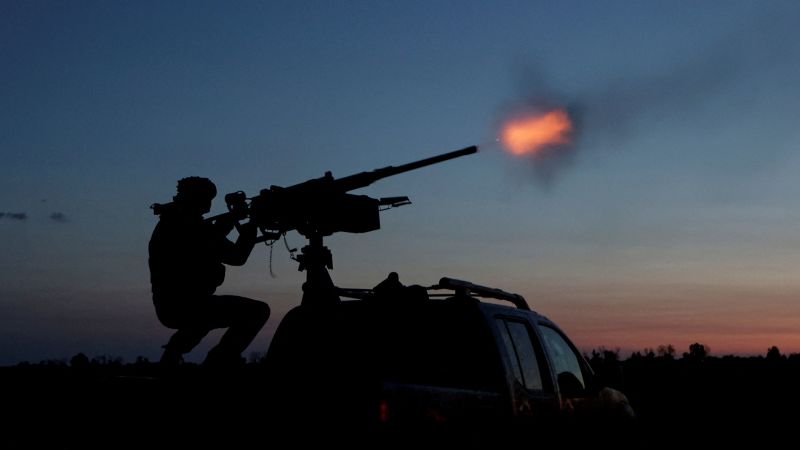US Shifts Anti-Drone Tech from Ukraine to Middle East, Raising Concerns Over Aid and Regional Security

In a move that has sparked debate and raised questions about the allocation of military aid, the Pentagon recently informed Congress of its decision to redirect crucial anti-drone technology initially earmarked for Ukraine to U.S. Air Force units operating in the Middle East. This shift, confirmed by correspondence obtained by CNN and sources familiar with the matter, highlights the evolving security landscape and the complex challenges of balancing support for Ukraine with the needs of U.S. forces in volatile regions.
The Technology in Question: Countering a Growing Threat
The technology being diverted is understood to be advanced counter-drone systems designed to detect, track, and neutralize unmanned aerial vehicles (UAVs). The proliferation of drones, both commercial and military-grade, has significantly heightened the threat to military installations, critical infrastructure, and personnel in recent years. These systems are vital for protecting against potential attacks, offering a layered defense against increasingly sophisticated drone operations.
Rationale Behind the Reallocation
According to Pentagon officials, the decision stems from the escalating tensions and heightened security risks in the Middle East, particularly in the wake of recent events. The U.S. military presence in the region faces persistent threats from Iranian-backed militias and other actors employing drones for reconnaissance and potential attacks. The redirection of this technology is framed as a necessary measure to bolster the defenses of U.S. forces and safeguard their operations.
Concerns and Criticisms
While the Pentagon defends the move as a pragmatic response to immediate security concerns, it has drawn criticism from some lawmakers and analysts who argue that it undermines U.S. commitments to Ukraine. Ukraine is currently facing a brutal invasion from Russia and relies heavily on Western military assistance to defend its sovereignty. Diverting crucial equipment, even if justified by regional security needs, could be perceived as a reduction in support at a critical time.
“It's a concerning development,” stated Senator Robert Menendez, Chairman of the Senate Foreign Relations Committee. “While we understand the need to protect our forces, we must also ensure that Ukraine receives the resources it needs to continue its fight against Russian aggression. This reallocation raises questions about our overall strategy and priorities.”
Impact on Ukraine's Defense
The extent to which this redirection will impact Ukraine's ability to counter Russian drone attacks remains to be seen. Ukrainian forces have been actively utilizing anti-drone technology to defend against Russian reconnaissance and strike drones. While alternative solutions are being explored, the loss of this specific technology could create a temporary gap in Ukraine’s defenses.
Looking Ahead: Balancing Priorities
This situation underscores the difficult choices facing the Biden administration as it navigates multiple global crises simultaneously. Balancing the need to support Ukraine's defense with the imperative to protect U.S. forces in the Middle East requires careful consideration and a clear articulation of priorities. The Pentagon has pledged to work with Congress and allies to ensure that Ukraine continues to receive the necessary support while maintaining the security of U.S. personnel and assets. The evolving geopolitical landscape demands a flexible and adaptable approach to military assistance and defense strategies.






